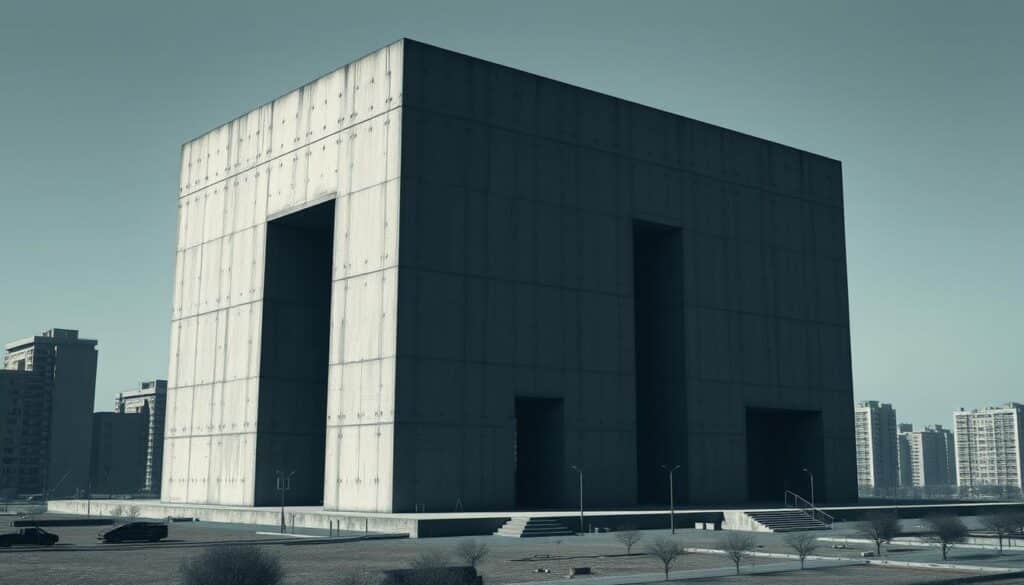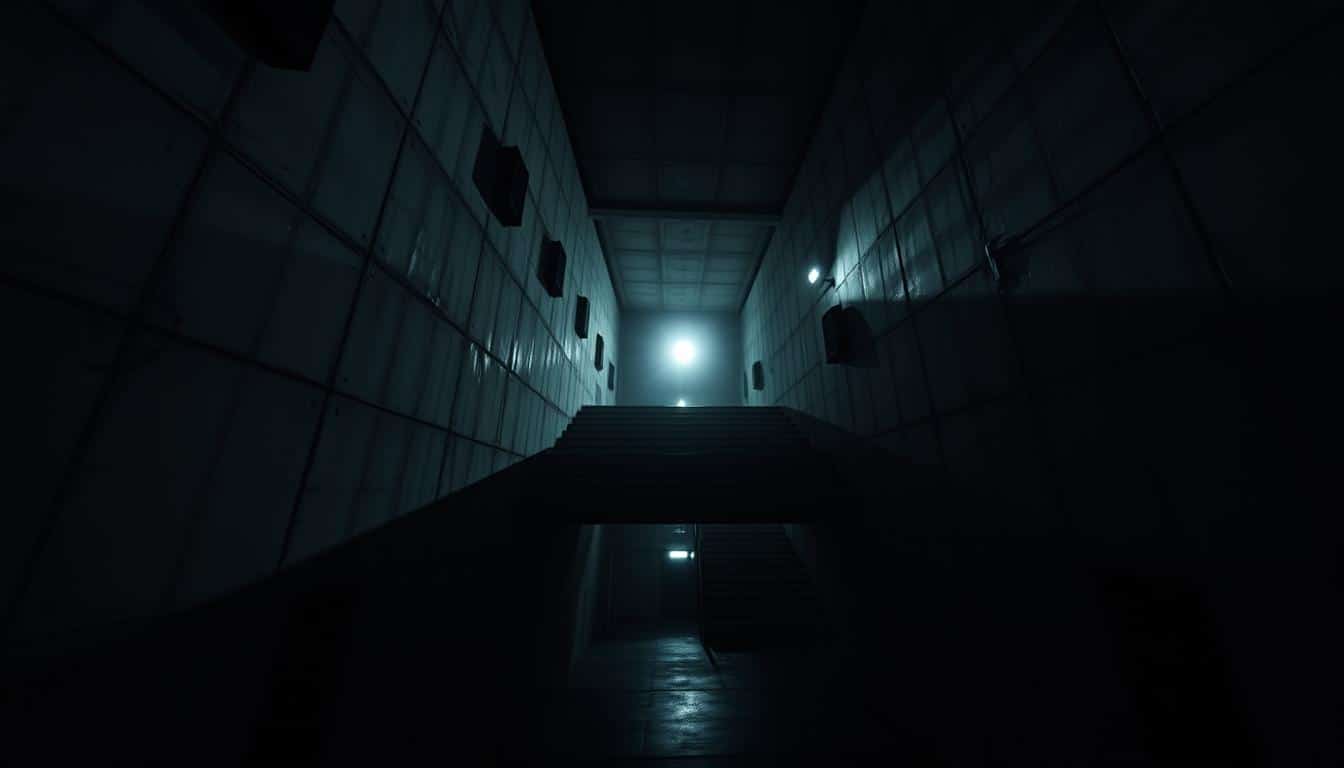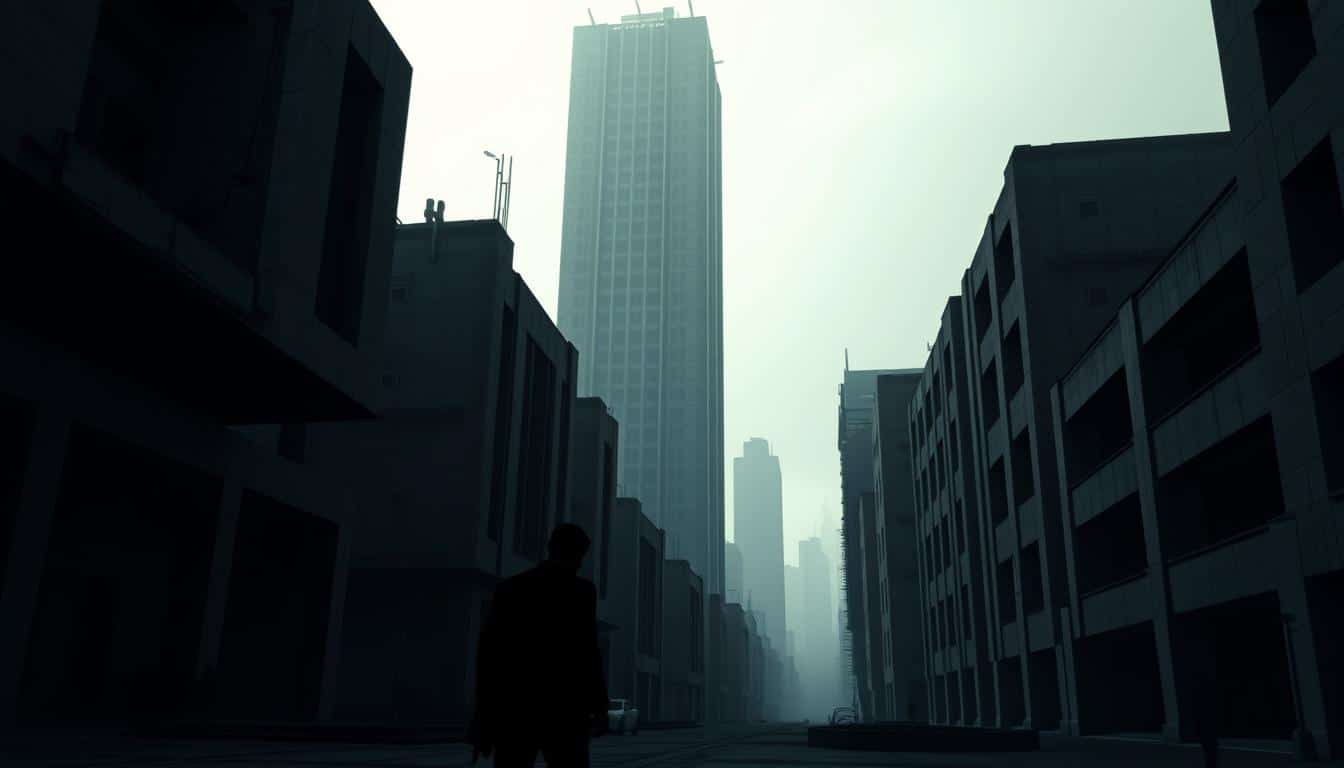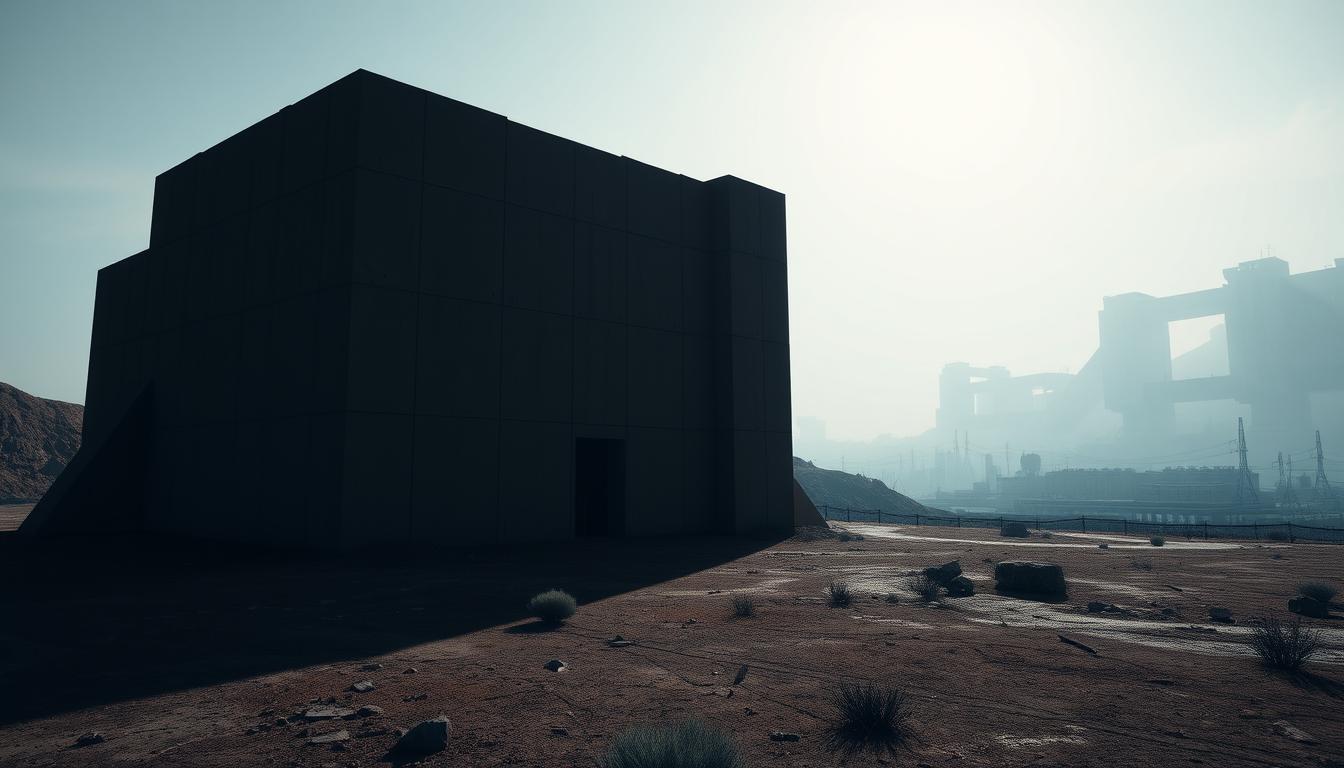Brutalism’s raw and bare look fits perfectly into psychological horror games. This style, with its simple, rough shapes, deeply affects the game’s mood. In scary games, brutalist architecture helps create a chilling atmosphere.
It makes the setting feel both creepy and fascinating. Putting players in front of huge, grim buildings and sad landscapes makes the game more intense. These games use brutalism to deepen the story and make you feel serious fear, pulling you into a dark world where every shadow is frightening.
The Essence of Brutalism in Architecture
Brutalism stands out with its strong, raw concrete designs. It started in the 1950s, focusing more on being practical than looking pretty. This style catches your eye, leaving you either amazed or uneasy.
The design uses sharp shapes that don’t blend in with nature. This can make people feel out of place or disconnected. But, brutalism is celebrated for its bold social and cultural messages. It challenges what we consider beautiful in architecture.

Historical Context of Brutalist Architecture
Brutalist architecture started after World War II in the United Kingdom. Architects like Le Corbusier led the trend with a raw, practical style. They aimed to meet public needs through this 20th-century design.
This style linked past architectural trends to an uncertain future. It came during times of economic trouble and social change. The severe look of brutalist buildings matched the era’s challenges and aims.
Brutalist architecture influenced not just buildings but also modern visual stories, like in video games. It affects environments in games, making them feel as intense as the real places they mimic.
Understanding Psychological Horror Games
Psychological horror games draw players into eerie worlds. Here, fear comes from the mind, not from cliché horror elements. They use narrative structures for complex stories, making you question what’s real. They avoid cheap scares, focusing on growing fear and mental unease instead.
Gameplay mechanics are key to making these games resonate. Players solve puzzles that test their wit and emotions, pulling them further into the story. Through unique storytelling, these games make players face their own fears, offering a personal journey.
The games use sound and characters to boost the sense of dread. Knowing what goes into psychological horror games shows why they’re so powerful.
The Allure of Brutalism in Psychological Horror Gaming
The stark, imposing structures of brutalism draw players into psychological horror games. This architectural style makes the game world feel both overwhelming and engrossing. It boosts the scare factor.
Brutalist designs suggest being trapped and alone. This strengthens the eerie feeling players get.
Such games twist space to increase tension. Brutalist buildings are not just scenery; they’re key to the story. This makes the gameplay merge stress and horror beautifully.
Notable Psychological Horror Games Featuring Brutalism
Several top games have used brutalist design to make their stories scarier. Games like “NaissanceE” put players in a world full of concrete and stark landscapes. These settings are not what you usually see, making you feel alone and uneasy.
“Chronos: The New Dawn” is another game that uses this style. It combines brutalist buildings from Eastern Europe with scary parts, creating a creepy and heavy atmosphere. The architecture is important for the story, making your journey through the game more meaningful.
Brutalist design in these games does a lot for the mood and the world they create. Every building adds to the story and feeling of the game. This mix of design and story pulls players in, making the experience haunting and memorable.
The Impact of Brutalist Design on Player Immersion
Brutalist design greatly enhances how players immerse themselves in psychological horror games. These game settings stand out with their stark, imposing structures. This style makes players feel deeply involved.
Players end up in spaces that feel strong yet strange. This mix of the familiar and the unsettling is core to brutalist design. Its key feature is creating an atmosphere that’s not just explorable but also filled with tension and fear.
The connection players feel with these settings is strong. Moving through these bare, simple areas touches on feelings of loneliness and despair. As players move forward, they face their fears, making the game very personal.
Moreover, the combination of clean lines and tough materials makes players think about the game’s story. Moving through these areas, they pay more attention to their surroundings. This boosts how involved they feel. The mix of mental depth and stark beauty makes horror gaming truly immersive.
Creating Fear: The Use of Space in Psychological Horror
Space is key to creating fear in psychological horror games. Brutalist architecture, with its huge, vague spaces, makes players feel lost and uneasy. These places feel like they’re trapping you, causing a fear of being closed in.
Brutalism’s look, with its hard lines and unclear edges, makes everything seem tense. The hidden dangers in these spaces keep players alert. How these areas are made changes how players move and engage with the story.
Key aspects of the use of space in psychological horror games include:
- Ambiguity: The uncertainty of what lies in the shadows creates tension.
- Isolation: Vastness can lead to feelings of loneliness and vulnerability.
- Suspension: Undefined areas heighten suspense, making exploration nerve-wracking.
By smartly using space in brutalist settings, games deeply affect how players feel. This boosts the horror experience a lot.
Contrasting Natural and Brutalist Environments in Games
Psychological horror games use nature and brutalism to pull us into a story. Nature brings peace with its green and calm landscapes. But brutalist architecture, with its concrete and straight lines, feels heavy. It makes us rethink what’s safe. This mix is key in games, adding depth to the story and our feelings.
Brutalist settings make players face their fears in a stark reality.
They show how far from nature we are, in places made of metal and concrete. This gives us stories of cities falling apart and makes us feel small against these huge buildings. Moving between these worlds makes games deeper. It challenges us and keeps us wanting to see what’s next.
Brutalism as a Reflection of Societal Anxieties
Brutalism is known for its bold and striking structures. It reflects deep societal worries. The style comments on modern life’s alienation and fear of collapse. In horror video games, these buildings add to the scare. They bring an eerie feel that boosts the game’s tension.
This architecture ties closely to the game’s spooky stories. It showcases fears of losing hope and cities falling apart. Players moving through these grim settings face not just game fears. They also touch on real-world issues that disturb many people today.
When games use brutalist designs, they draw players deeper into the story. The way these games are made often hints at deeper fears in society. This mix creates a story world that’s not just scary. It makes you think about survival and what truly frightens us, keeping players hooked.
Contemporary Games Embracing Brutalist Elements
Many modern games are now using brutalism, changing how we experience their worlds. “Cronos: The New Dawn” shows this by combining the harsh style of brutalism with its story. This makes for a more intense game that feels very real and scary.
This mix of style and narrative makes the game’s horror parts even scarier. It also starts a new trend in game design. Now, how a game looks is as important as its story.
Future games are likely to keep using brutalism because players want more from their games. They don’t just want pretty scenes. They want games that make them think and feel, which brutalism does well.
There’s a growing interest in games that mix horror with brutalist styles. This trend isn’t slowing down. Developers are finding new ways to use brutalism’s bold looks to make their games stand out. This keeps brutalism at the forefront of game design.
Challenges and Critiques of Brutalism in Gaming
Brutalism’s bold look can challenge gamers. Some love its straightforward style. Yet, others might find it too cold and unwelcoming. This style can sometimes feel overwhelming, instead of drawing players in. It shows the issues with using brutalism in games.
Game makers face a tough task. They want to use brutalism’s strong vibe but keep the game fun and deep. If not done right, brutalist styles can make a game boring. This feedback is crucial for those trying to include brutalism well in their games.
Conclusion
The study of brutalism in horror games shows its strong power to make creepy vibes that stick with players. As games grow, knowing how buildings affect player feelings is key. Brutalist design’s effect goes beyond looks, helping us see fears and feelings in new ways.
More and more, game makers are using brutalism’s bold look in their work. This means horror games will become even more engaging and real. This mix of architecture and gameplay doesn’t just make games scarier. It also makes us face our biggest fears.
So, brutalism in horror games is more than a trend. It’s proof of how creative game storytelling can be. With it, games can offer deeper, more meaningful experiences.



